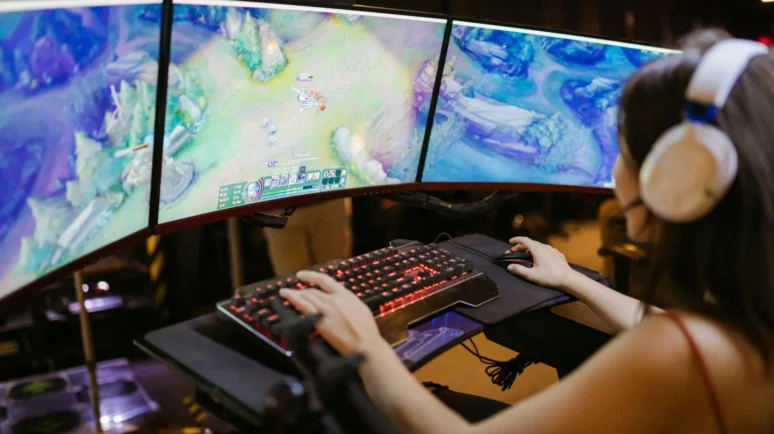
Blockchain gaming investments soared 314% in Q2 2024.
Player-owned economies are revolutionizing engagement with tradable, value-retaining assets.
Decentralized gaming platforms unlock new revenue streams for players and developers alike.
In Q2 2024, blockchain gaming attracted a remarkable $1.1 billion in investment, marking a 314% increase from the previous quarter and setting a new high since 2022. This surge reflects a broader evolution in gaming revenue models that prioritize continuous player engagement and shared ownership.
While traditional games have already begun adopting live service models to generate sustained revenue and reduce development strain, blockchain gaming has organically embraced these principles.
The result is a win-win: players enjoy sustained engagement, while developers can focus resources on enhancing a single platform.
Decentralized Economies Empower Players
One of the most compelling aspects of blockchain gaming is its embrace of player-owned economies. With blockchain, players can own and trade digital assets—assets that retain value outside of the game.
This ownership model is an evolution of the live service model. Rather than simply paying for in-game content, players are empowered to create and capture value through their gameplay, making them more invested and more likely to stay engaged over the long term.
For competitive platforms, leveraging blockchain also introduces diverse revenue opportunities. Decentralized structures enable secondary sales, staking, royalties, and other innovative monetization strategies, creating multiple income sources.
This opens doors for players who can benefit financially from participating in competitive gaming ecosystems.
In an industry where engagement directly correlates with profitability, competitive gaming platforms stand to drive growth substantially through blockchain’s financial flexibility.
Competitive Blockchain Platforms
The live service model—where games are continuously updated rather than replaced with new releases—has fundamentally shifted the gaming industry.
Titles like Fortnite and Apex Legends pioneered this approach, offering players a dynamic, evolving experience while alleviating the demands on developers that annual releases entail.
Competitive gaming platforms are uniquely positioned to maximize the advantages of blockchain technology by fostering player ownership, transparent transactions, and vibrant, self-sustaining economies.
In traditional gaming, tournaments, rankings, and leaderboards can be major attractions, but blockchain goes further by letting players monetize their skills and assets in unprecedented ways.
Blockchain technology enables features like secure peer-to-peer transactions, ensuring players have a say in the marketplace while also offering added security and transparency.
Platforms using blockchain can design unique value propositions, such as tokenized in-game assets that players can own and trade freely, staking rewards for active participants, and decentralized governance where users vote on platform updates or tournament structures.
These competitive platforms unlock fresh revenue streams, transaction fees, royalties from asset trading, and even staking or voting rewards, creating multiple points of engagement and profitability.
Blockchain Gaming in 2025
However, blockchain gaming faces challenges that need addressing to sustain its momentum. Usability remains a barrier to mainstream adoption, with complex wallet systems and token mechanics still intimidating to traditional gamers.
Solutions to simplify these processes are emerging, and some platforms are working on user-friendly integrations to make blockchain gaming as accessible as traditional titles.
Scaling is another essential focus area. With millions of users, blockchain infrastructure must support high demand without compromising on speed or security.
The investment influx into blockchain gaming this year highlights an alignment with trends seen in the broader gaming industry: a shift toward continuous, evolving engagement, with players becoming co-creators and stakeholders in the ecosystem.
Just as the live service model has minimized the need for constant new releases and maximized engagement, blockchain’s decentralized structure promises similar longevity by encouraging sustainable player-driven economies.
This model relieves the pressure of time-intensive releases for developers and startups, while VCs and investors see blockchain gaming as a robust asset in a dynamic investment landscape.
For players, blockchain gaming offers the ultimate reward: the ability to contribute, own, and benefit from their favorite games in unprecedented ways.
